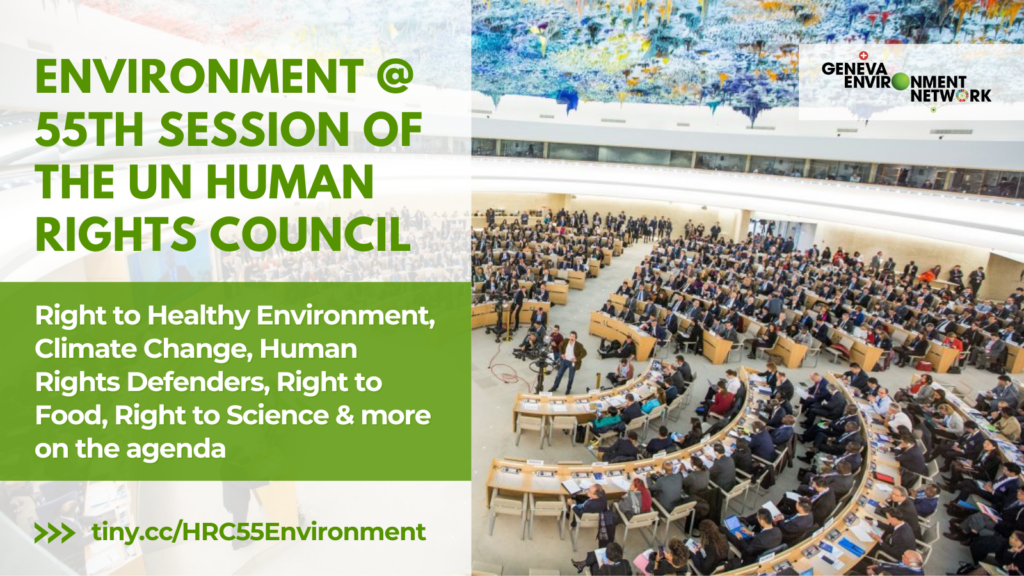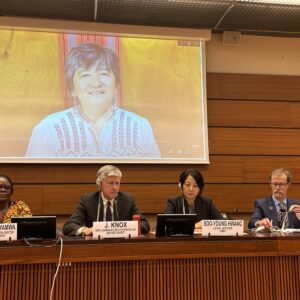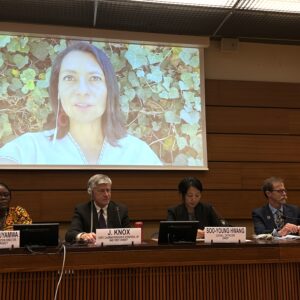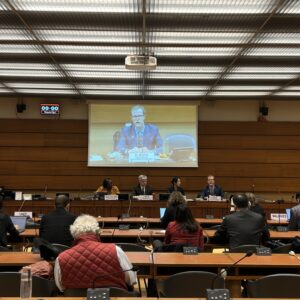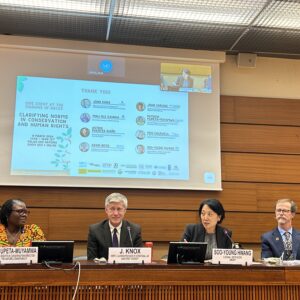Event Conference
Clarifying Norms in Conservation and Human Rights | HRC55 Side Event
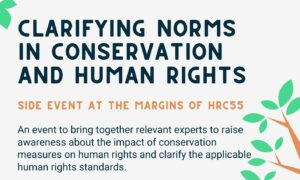
08 Mar 2024
13:00–14:00
Venue: Palais des Nations, Room XXV & Online | Webex
Organization: United Nations Environment Programme, Geneva Environment Network, International Funders for Indigenous Peoples, International Work Group for Indigenous Affairs, Indigenous Peoples Rights International, Soka Gakkai International, United Nations Office of the High Commissioner for Human Rights, United Nations Development Programme, Indigenous Movement for Peace Advancement and Conflict Transformation, Women4Biodiversity, Rainforest Foundation UK, Alliance for Indigenous People and Local Communities for Conservation in Africa, Accountability Counsel, The Nature Conservancy, International Union for Conservation of Nature, Forest Peoples Programme, Tikva Grassroots Empowerment Fund
This side event to the 55th session of the Human Rights Council brings together experts from a range of relevant backgrounds to discuss the process of examination and clarification of the applicable standards, with particular attention to the role of conservation organizations and conservation funders.
About this Session
Despite awareness of the importance of respecting the rights of Indigenous Peoples and other rights-holders in conservation, recognized most recently in the Kunming-Montreal Global Biodiversity Framework (GBF), the creation and administration of protected areas and other conservation initiatives have often violated their human rights. An important part of the problem appears to be the lack of widespread understanding of the relevant human rights norms by conservation organizations and conservation funders.
The international community is facing a global loss of biological diversity on a scale unprecedented in human history, as reported by the Intergovernmental Science-Policy Platform on Biodiversity and Ecosystem Services (IPBES 2019). At the same time, the international community has often emphasized the importance of respecting the rights of Indigenous Peoples and other rights-holders in conservation, most recently in the Kunming-Montreal Global Biodiversity Framework (GBF) adopted in late 2022.
The crisis of biodiversity is also a crisis of human rights. Everyone on the planet is affected by the loss of biodiversity, but those who are and will be most affected are those on the front lines: the Indigenous Peoples and others who depend most directly on natural ecosystems for their material and spiritual well-being. The forces destroying the natural world, including poaching, land-grabbing and illegal logging, also directly threaten Indigenous Peoples and and other rights-holders who live in natural ecosystems. When they defend their homes, they are often harassed, detained, arrested, beaten, and even murdered. Of the 1,733 environmental and land defenders killed because of their work between 2012 and 2022, more than one-third were from Indigenous Peoples and other traditional forest dwellers (Global Witness 2022).
To be successful, efforts to conserve nature must respect and protect the rights of those already working to defend it. Studies have shown that protecting Indigenous rights in their ancestral homes can do more than governmental control to conserve natural ecosystems (IPBES, 2019 & FAO and FILAC 2021) However, the international conservation movement historically treated Indigenous Peoples with some degrees of hostility or indifference. Governments and conservation organizations often developed national parks and other protected areas with the goal of excluding human presence, and Indigenous Peoples were violently dispossessed of their land (A/71/229).
Although it is far from the entire problem, an important factor is the lack of clear understanding of the applicable human rights standards. Conservation organizations do not seem to share a common view of the applicable norms, and funders of conservation projects fail to ensure that their support does not inadvertently contribute to human rights abuses. It seems evident that there is a need for clear human rights guidance for both conservation organizations and major funders of conservation.
This side event is organized to bring together experts from a range of relevant backgrounds to discuss the process of examination and clarification of the applicable standards, with particular attention to the role of conservation organizations and conservation funders.
Speakers
By order of intervention.

John KNOX
Henry C. Lauerman Professor of International Law, Wake Forest University

Joan CARLING
Executive Director, Indigenous People Rights International
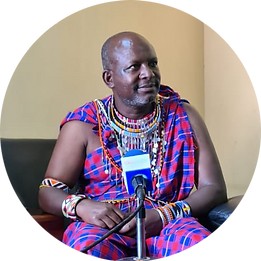
Mali OLE KAUNGA
Executive Director, IMPACT Kenya
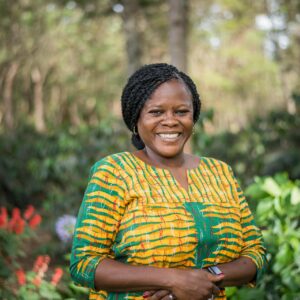
Patricia MUPETA-MUYAMWA
Africa Indigenous Landscapes Strategy Director, The Nature Conservancy
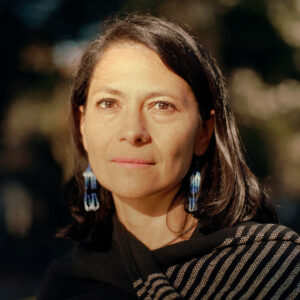
Astrid PUENTES RIAÑO
Environmental Lawyer, Specialized in Human Rights

Meg CALDWELL
Ocean Director, Packard Foundation
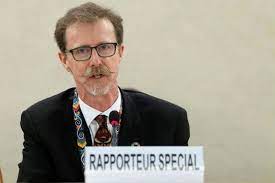
David BOYD
UN Special Rapporteur on human rights and the environment

Soo-Young HWANG
Legal Officer, UN Environment Programme | Moderator
Highlights
Summary
Opening and Introduction
Soo-Young HWANG | Legal Officer, UN Environment Programme | Moderator
- We face a climate crisis, a biodiversity crisis, and a pollution crisis, among others. Conservation is an area that is less known but requires a lot more attention. Human rights can benefit a lot from people working in the conservation areas.
- The governments that are Parties to the Convention on Biological Diversity (CBD) have committed themselves to declare 30% of their territories and oceans as protected areas by 2030. However, most of the time protected areas are designated without proper consultation with Indigenous Peoples. Hence, we have an opportunity to protect more biological diversity, but we also have an opportunity to promote and respect human rights in the conservation area and changes.
- A change in conservation is needed to respect human rights more to address past issues and to prevent any future human rights violations or abuses.
- We should push for human rights principles in conservation and work with all stakeholders, including conservation organizations, Indigenous Peoples, and the local communities.
Panel Discussion
John KNOX | Henry C. Lauerman Professor of International Law, Wake Forest University
Biodiversity Crisis is a Human Rights Crisis
- UNEP has been working on developing human rights principles on conservation, for which I helped prepare draft principles for discussion.
- The global biodiversity crisis is also a human rights crisis and a crisis for all of us because the loss of global biodiversity drastically interferes with everyone, everywhere, including the rights to life and health and the right to a healthy environment.
- It is especially a catastrophic threat for Indigenous Peoples and others who live directly in the natural ecosystems that are most at risk of being destroyed. They are the ones who are on the frontlines in defending those ecosystems and they are the ones bearing a disproportionate cost.
- Among the 1,733 environmental defenders who were killed because of their work, between 2012 and 2022, more than a third were indigenous peoples despite Indigenous Peoples making up only about 5% of the global population. It seems obvious that the people who are on the frontlines are protecting the natural environment from destruction by mining companies, by logging from illegal poaching that it would make sense to protect them first and to protect their rights.
- However, historically, for over a century and throughout the 20th century, the ideal of international conservation was fortress conservation. The ideal was that you would best protect the environment by setting aside protected areas, free of any permanent human population. In the pursuit of that vision, which was largely driven by colonial powers, they imposed this vision on places in the global South at first. In pursuit of that vision, tens of millions of Indigenous Peoples, and others were displaced often violently from their ancestral lands.
Norms in Conservation: Against Fortress Conservation
- In 2003, the international conservation community came together to say fortress conservation is no more (note: following the 5th World Parks Congress). We rejected the idea of fortress conservation. Instead, we decided to respect the human rights of Indigenous Peoples and others, and to pursue inclusive conservation on the basis of partnership with them instead of treating them as the enemy.
- The problem today is not so much what the norms should be but the implementation of those norms. The conservation community has accepted the idea that they should be complying with human rights but there is still an enormous gap between that acceptance in principle and the practice of conservation, which in many parts of the world today continues to be based on a kind of fortress conservation mentality.
- In 2016, Victoria Tauli-Corpuz, the UN Special Rapporteur on the rights of Indigenous Peoples wrote a groundbreaking report on conservation and human rights (A/71/229). She noted that since 2001 she and her predecessors in that mandate had received numerous allegations of large-scale violations of the rights of Indigenous Peoples in the context of conservation measures.
- In 2022, the current Special Rapporteur Jose Francisco Cali Tzay reported that Indigenous Peoples across the globe have overall not seen improvement in the realization of their rights in the context of conservation since the 2016 report by Vicky Corpuz (A/77/238). He stated that the exclusionary approach to protecting biodiversity known as fortress conservation continues to prevail and has led to violent evictions, militarized violence, and the disposition of the lands of peoples, who are the best stewards of nation of nature.
- The Kunming-Montreal Global Biodiversity Framework sets aside 30% of the entire globe, of the land and the oceans as protected areas by 2030. This 30 by 30 target is enormously ambitious. It would essentially more than double the number of protected areas in the world in less than a decade. Indigenous Peoples and others are understandably worried that this might take place at their expense as so much of the history of international conservation has unfortunately taken place at their expense.
Clarifying Norms and Principles in Conservation
- Therefore, the UNEP project aims to clarify how exactly the human rights framework applies notably to major actors in conservation such as non-state actors, big conservation organizations, and big conservation funders. In this direction, there are the UN Guiding Principles on Business and Human Rights, developed by John Ruggie and then endorsed by the Human Rights Council in 2011. Some oversight mechanisms have already taken those principles and applied them to conservation organizations, such as the World Wildlife Fund.
- Therefore, we took the norms that had already been developed and explained how they could be applied to conservation organizations considering these guiding principles and international human rights norms, such as the Universal Declaration of Human Rights.
- These core conservation principles would include a requirement to undertake human rights due diligence. They would have to:
- include the requirement to engage in meaningful consultation with all affected stakeholders abiding by the requirement before undertaking actions that would adversely affect indigenous peoples;
- be clear that they are under an obligation to prevent or cease any adverse human rights impacts, and that they either are responsible for, or cause directly or contribute to these impacts;
- use all their leverage to try and prevent those impacts from occurring;
- provide effective remedies for the adverse impacts they cause;
- report publicly and regularly on what they are doing so that people can see how well these human rights principles are being effectively implemented.
- be especially careful when providing support to law enforcement, a lot of the human rights violations in this area have occurred essentially, as the result of abuses by park rangers, acting as law enforcement in pursuit of poachers, or other local laws, national laws abusing their privileges and law enforcement by murdering, raping, torturing, otherwise abusing indigenous peoples and others. Hence, for conservation organizations before they would ever support law enforcement.
- have additional requirements like meeting conservation funders because they would be required to make sure that any recipients of their funding have an appropriate safeguards in place to prevent these kinds of abuses and to respond effectively if they do, and funders would have to have mechanisms in place to restrict or terminate funding if it turns out that despite those protections, abuses nevertheless occurred.
- We hope to finalize these principles and be able to launch them in advance of the October Conference of the parties to the convention on biological diversity.
Joan CARLING | Executive Director, Indigenous Peoples Rights International
- Conservation efforts have both positive and negative impacts on Indigenous Peoples.
- On the one hand, building collaboration and partnership with Indigenous Peoples based on respect for our rights and well-being has yielded positive results because it recognizes our roles and contributions as stewards of nature.
- On the other hand, conservation based on the colonial approach of separating nature from people has been highly problematic. This approach is directly in conflict with our values and principles and with a clear violation of our rights, to our lands, territories, and resources. It also criminalizes us when we practice activities such as hunting, fishing, and gathering of forest products among others. This has resulted in the incarceration of hundreds of indigenous peoples with hardly any access to justice. It has also evolved into the systemic abuse and violence against Indigenous women by security guards of national parks and conservation areas.
- It is important to fully understand what a human rights-based approach to conservation really means on the ground and to know and establish the key institutional steps to put these commitments into action. This is especially so in the implementation of the targets of the Global Biodiversity Framework and in creating effective solutions to climate change. It also requires cultural sensitivity by understanding and integrating our cultural values and practices to enhance collaboration. It is also an obligation to ensure the effective participation of Indigenous Peoples in decision-making processes concerning conservation efforts by establishing effective mechanisms for long-term, and sustainable engagement.
Mali OLE KAUNGA | Executive Director, IMPACT Kenya
- There are a number of people being displaced and abused for being found in protected areas.
- We should create new conservation areas, or protected areas to have a more robust focus on support for Indigenous Peoples. Local areas should have their own (ways of) conservation according to their own Indigenous People and species, according to their livelihoods.
- Funding agencies should respect traditional knowledge. These people have for many years contributed to conservation and biodiversity in their own ways and means. It is important to have more dialogue on these issues at the national level and ensure nation-wide diversity.
Patricia MUPETA-MUYAMWA | Human Rights in Conservation Director, The Nature Conservancy
- I remember as a child, during a school trip, seeing rhinos on the horizon running around. In the 1980s, Zambia had the third largest rhino population at about 18,000.
- However, we lost the rhino population to the point of extinction. Today, as I speak, we are reintroducing rhinos. The story of rhinos is very closely intertwined with the loss of Indigenous Peoples and communities’ rights and stewardship in a lot of our landscapes and areas, especially in the global South.
- The models of the eighties and nineties, which were fortress conservation, took people’s rights away: the right for people to self-determine their roles and their space in protecting these areas.
- Human rights are strongly intertwined with biodiversity and the climate crisis.
- I had the opportunity to be the director of human rights and conservation, a new role. It was the first time conservancy had created an office of human rights.
- As an international conservation organization, we ensure we do no harm to the rights of Indigenous Peoples and do good in the work. Clarifying the norms is how this work translates daily in our work.
- We have all 4 key pillars [of the UNGPs], which build off some of the clarifying norms to develop a human rights due diligence framework for the organization. We are also focusing on thinking about how we partner with Indigenous Peoples and local communities under the UN declaration on the rights of Indigenous Peoples and other rights holders. Finally, we have a unit that is now beginning to think about a minimum performance standard for ensuring safeguards are in place and these safeguards are based and integrated from a human rights perspective.
Astrid PUENTES RIAÑO | Environmental Lawyer, Specialized in Human Rights
- Conservation efforts have violated the rights of Indigenous Peoples, and of other communities that are based in, lived in, and own a lot of these areas.
- This is because of the ignorance of the human rights laws that apply, or because of the premise that nature is better without any human being around. However, and as Western science has highlighted, today, 80% of the biodiversity that we need and want to protect is surely being guarded and protected by Indigenous Peoples and their communities.
- The role of women and girls in these communities, and in these conservation efforts have been key.
- Human rights guidelines for conservation organizations can be a key tool for clarifying, advancing and hopefully also remedying a lot of the human rights violations that conservation efforts have cost.
Meg CALDWELL | Ocean Director, Packard Foundation
- The Packard Foundation has been supporting work to advance the integrity and help of our environment over the last 60 years. We work with and support people and communities to create durable and equitable solutions for a healthy resilient natural world where both people and nature flourish.
- To achieve this vision, it is important to protect and uphold human rights in conservation, particularly by funders in the conservation space. The global biodiversity crisis is also a human rights crisis, especially for those people and communities who rely on healthy ecosystems for food, livelihoods, and cultural heritage.
- It is important to show leadership at the intersection of planetary, health and human well-being.
David BOYD | UN Special Rapporteur on the right to a clean, healthy and sustainable environment
- It is important to recognize that the science is now crystal clear that the best way to protect biological diversity is to recognize the rights of Indigenous Peoples and other traditional place-based communities. There are terrific examples from all around the world of rights-based conservation, taking place in protected areas in Australia and in Canada, and very impressive community-based conservation efforts in Namibia and Botswana in Africa. We need to learn from those good practices and teach them to other parts of the world.
- Rights-based conservation is an obligation and not an option. It is fundamentally important to recognize that it is not a luxury. It is the way all conservation action should be implemented going forward. I think that the Kunming Montreal Global Biodiversity Framework that was negotiated a couple of years ago is actually very strong on human rights, with multiple references to Indigenous People’s rights, a reference to the right to a clean, healthy and sustainable environment, a reference to the rights of women and girls in conservation.
- What we need to really focus on with these guiding principles going forward is ensuring that States and conservation organizations, all actors involved in protecting, conserving, and restoring biodiversity, follow their commitments. We need to hold states that perpetuate such forces and make conservation accountable. We need to hold conservation actors who contribute to forecast conservation accountable and ensure that all actions are based on human rights.
- Human rights are really at the center of conservation action and these guidelines or principles are critically important, getting them out into the world will be vital through meetings of the International Union for the Conservation of Nature. In the World Protected Areas Congress, I would love to see in a resolution a reference to the Human Rights Council.
- We are at a critical time in the conservation of biodiversity on earth, we need to move forward rapidly, but we need to have Indigenous People at the forefront of that movement.
Open Discussion
Radhika MURTI, IUCN
- In 2016, we opened a category of membership for Indigenous People’s organizations. In 2021, we have our Congress every 4 years, that were able to vote alongside the governments and other international and national organizations that work in conservation.
- It is a priority to not only look at how we do human rights in conservation ourselves but to partner with the human rights community to get this.
- There must be some level of transparency, a strong partnership with the human rights community and practitioners to work with us to get things right and get our members on the same path.
UNDP
- We recognize and reaffirm the growing emphasis placed on rights-based approaches under the first trial global biodiversity framework adopted by state parties at the CBD called 15.
- We reconfirm our commitment to working with your environment and on the rollout and implementation of the UN guidance to resonate coordinators and regarding support to environmental defenders furthermore as part of the 75th anniversary of the universal declaration on human rights are UNDP has pledged to operationalize the right to clean healthy and sustainable environment in 100 countries by 2030.
- We aim to achieve this by integrating the right to healthy environment into joint programming under the nature pledge and through updating and supporting implementation of national biodiversity strategies and action plans in line with the GBs as well as assisting civil society organizations, indigenous peoples, and local communities in directly accessing finance.
- Finally, we are equally committed to deepening our engagement with the judiciary in ensuring access to environmental justice, expanding human rights due diligence processes as well as supporting national humorous institutions.
Ben SCHACHTER, UN Human Rights
Could you share a little bit more about the next steps in terms of how to get these principles acted upon once they are finalized? What is the plan for ensuring uptake?
A: John KNOX
- There is a general consensus around these conservation organizations and funders are already thinking about this and some have already taken steps, serious steps in this direction. I think what would be great is if these norms help shape what they are doing and help clarify.
- We also need to provide a kind of standard by which what they are doing can be assessed.
Closing
- From all the stakeholders, including especially Indigenous Peoples, we must have a bottom-up approach to this issue. This is because a lot of policies through the consultation, a lot of Indigenous Peoples and the communities were telling us that they did not want the top-down approach to conservation anymore, they want to have the ownership to the principles.
Video
Live on Facebook in the room.
Live from Webex
Environment @ HRC55
The 55th regular session of the Human Rights Council (HRC55) is taking place in Geneva and online from 26 February to 5 April 2024. This regularly updated page highlights the environmental-related activities of this session.
Photo Gallery
Links
- 55th Regular Session of the Human Rights Council (HRC55)
- Human Rights and the Environment | GEN
- Human Rights and Biodiversity: Key Messages | UNEP & OHCHR


